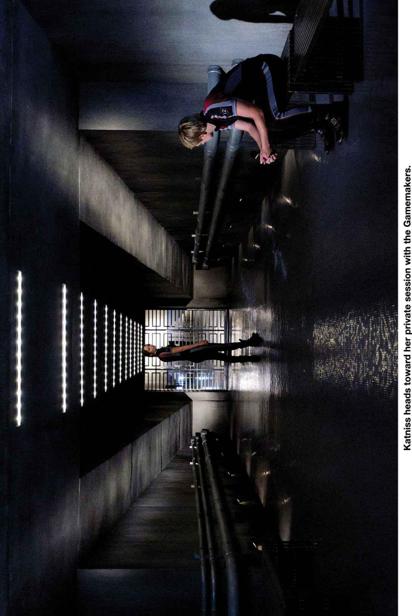The Hunger Games: Official Illustrated Movie Companion (15 page)
Read The Hunger Games: Official Illustrated Movie Companion Online
Authors: Scholastic,Kate Egan
Tags: #Juvenile Nonfiction, #Television & Radio, #Action & Adventure, #Juvenile Fiction, #Performing Arts, #General, #Science Fiction, #Social Issues, #Film, #Survival Stories

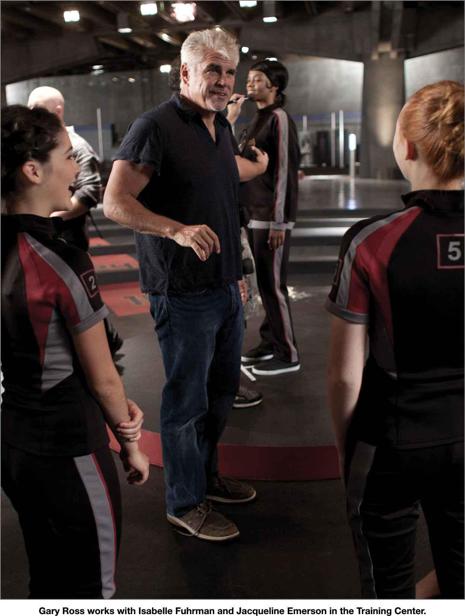
Another special effects challenge was building — and then destroying — the pyramid of Career Tributes’ supplies. McLaughlin remembers that he didn’t discuss the pyramid in great depth with Gary Ross before he began setting it up. “We put something together to show him. What we thought was fairly good in size. And Gary said, ‘I want it four times bigger.’ So our eyes lit up, and we went back to the drawing board and we came up with something for him. He absolutely loved it.”
When the pyramid’s size increased, the size of the eventual explosion increased, too. Location manager Christensen hoped that wasn’t going to be a problem. “The pyramid was built at North Fork in the same meadow as the Cornucopia. That’s a watershed, and they don’t want anything going into the water. We had to not only have that pyramid in a particular place, but also far enough away from the water, and blowing up away from the water. But it kept getting bigger! When I told the conservancy that our plans had changed — that the explosion would be larger — they were great. They just said, ‘I wish we could be there to see it.’ But they were busy doing other things.”

The crew prepares to shoot the fireball sequence in the arena.
Some scenes were too large or too complex to film in real places or with real actors, but these scenes could be extended with computer imaging. “When I’m choosing locations,” production designer Phil Messina says, “I’m often thinking about which parts get set-extended, and where the extensions could start. You have to think of the entire frame, and some of it is virtual. For the Avenue of the Tributes, it was just kind of a no-brainer that it was going to have to be a virtual environment. So I created the chariots and I designed the space — about a mile, from one end to the other, ending with the president’s box. We just picked out the pieces we really needed to build — that’s what made the most sense.”

Jennifer Lawrence prepares to shoot the fireball scene.
Visual effects like the rest of the Avenue, or the hologram in the Games Center, would be added after the movie was finished filming (and are being added as this book is being written). They will add texture and depth to many scenes, and create parts of the scenes that would be impossible to film.
One final dimension to the film, of course, is the music. The movie’s haunting and memorable score was composed by musical legend James Newton Howard. Just like the production design, the music hits two particular notes: the past and the future.
Ross describes James Newton Howard as “One of the greatest composers in movies. Somebody who’s written some of the greatest scores. I think he’s worked on over a hundred movies — his body of work speaks for itself.”
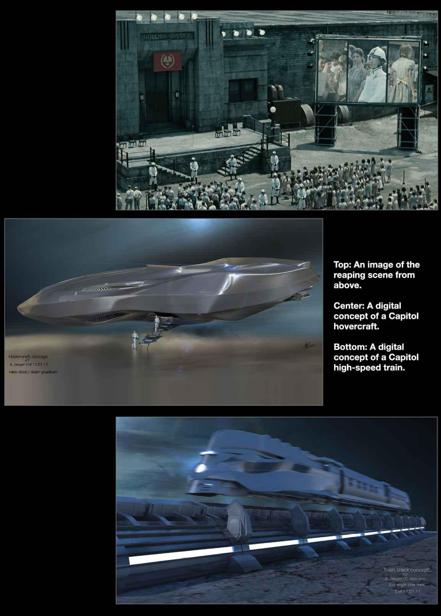
Katniss’s lullaby sprang to life when T-Bone Burnett read the lyrics in Suzanne Collins’s book, says Gary Ross. “Suzanne’s lyrics were iconic within the story already. Katniss sings the lullaby to Prim in the beginning and to Rue later in the movie. T-Bone went away one night and called me the next morning, saying, ‘You’re not going to believe this.’ He was so thrilled. And then when I heard it, what was remarkable was it felt like it had always been there. It felt like something that came out of Appalachia that mothers had been singing to their kids for generations.”
With months of filming, and many additional layers of postproduction work, the movie was finally ready to show to the larger world.
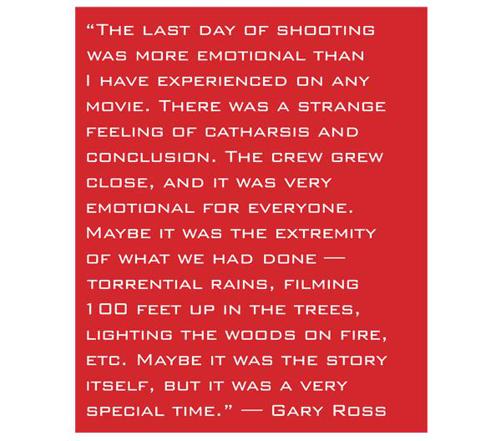
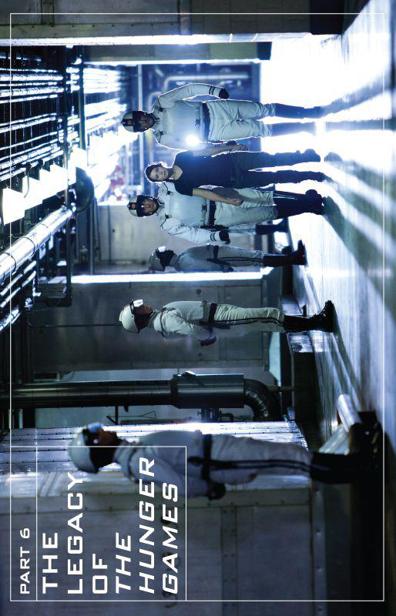
I
n
The Hunger Games
there’s something for everyone.
A gripping adventure.
A political commentary.
A love story.
A cautionary tale.
Some call it science fiction, some call it potential reality.
Some say it’s for teenagers, some say it’s for adults.
The book — and now the film — captures themes and concerns that seem timely.
But its real strength, in the end, is that it’s timeless. It speaks to us today and it will still speak — even more powerfully — tomorrow.

Director Gary Ross says, “
The Hunger Games
gets people invested in a contest. People are rooting for their favorites, rooting for their survival. And suddenly, unwittingly, the people being oppressed are actually engaged in this form of entertainment. That’s one of the things Suzanne did that was so brilliant. She understood the ultimate extension of something like this. The way you get to control people is to make them participate, not just subjugate them. If there’s one survivor, one victor, we get them participating in our system.”
It’s one of the tricky questions about making
The Hunger Games
into a movie, of course. In a
New York Times
interview, Suzanne Collins wondered about this herself. “When you go to see the movie, you’ll be a part of the audience in the theater, but will you feel like part of the Hunger Games audience as well? Will you actively be rooting for certain tributes to live or die? Or will you distance yourself from the experience? How much will you be caught up in the Capitol’s Game? I can’t even answer that question for myself yet, but I’m really intrigued by it.”
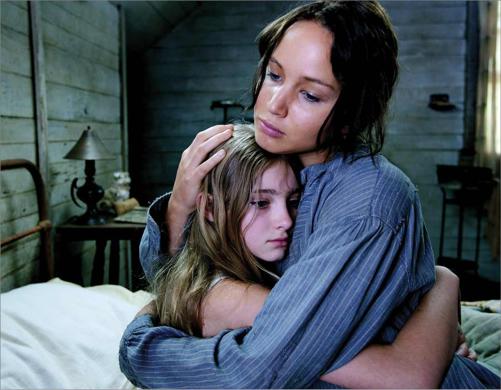
Katniss and Prim embrace the morning of the reaping.
It’s not every movie that makes you question the experience of watching it in the first place, but that is a part of the genius of the series. From the very start, it was willing to grapple with serious subjects within the framework of a compelling story. Collins deliberately constructed Panem with echoes of the world we live in, and these echoes reverberate in every moment of the film.
